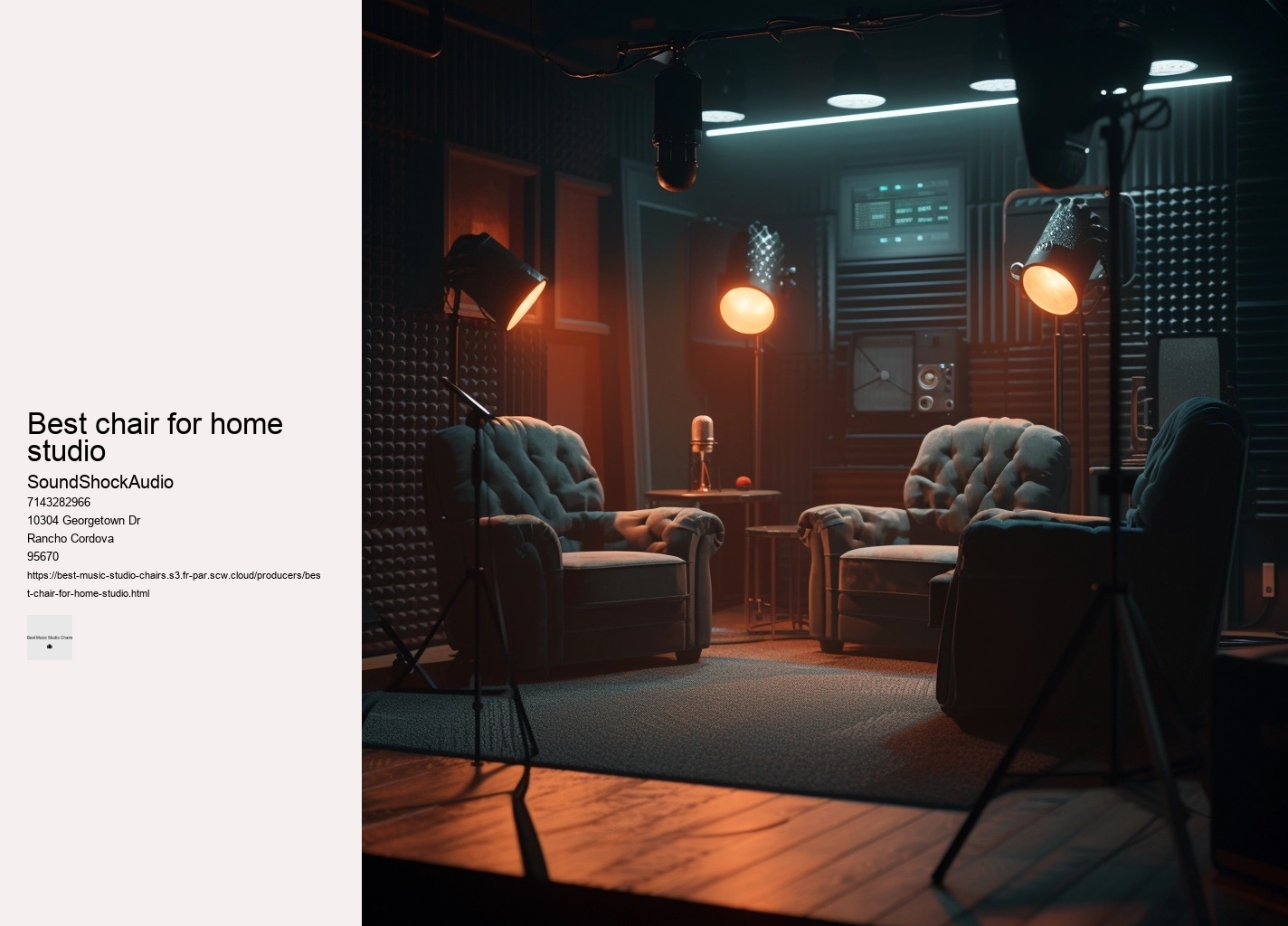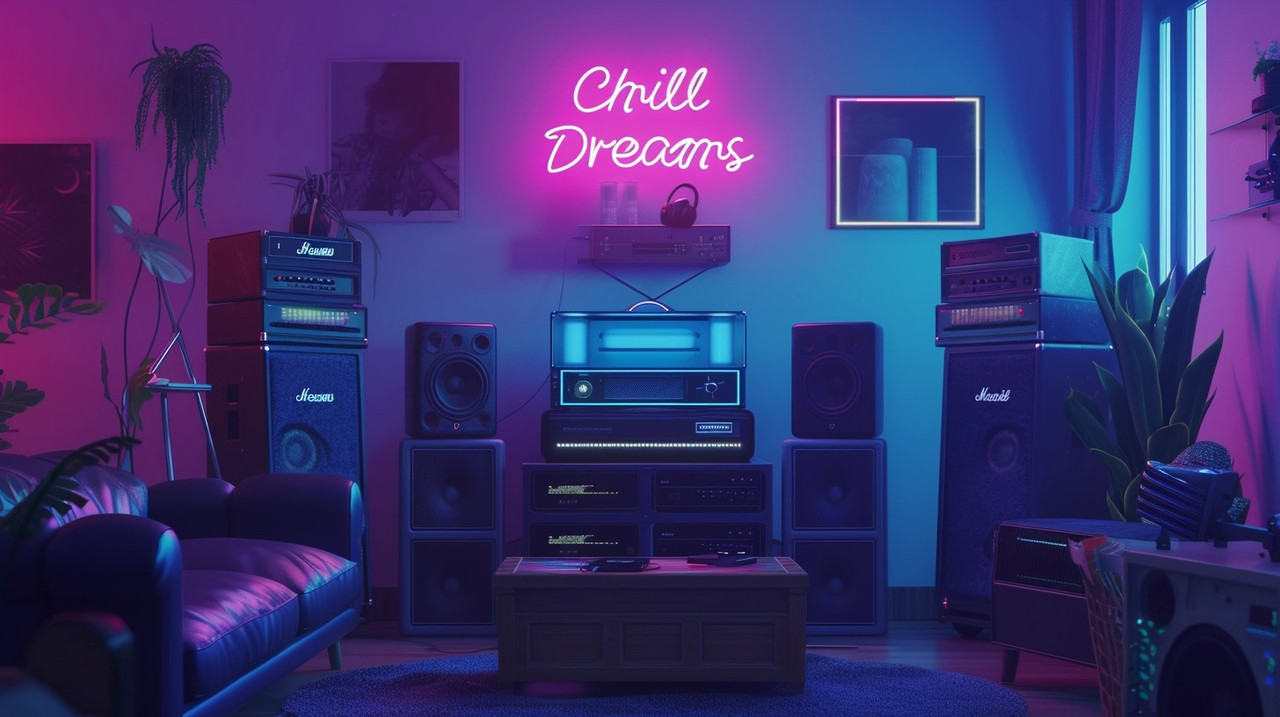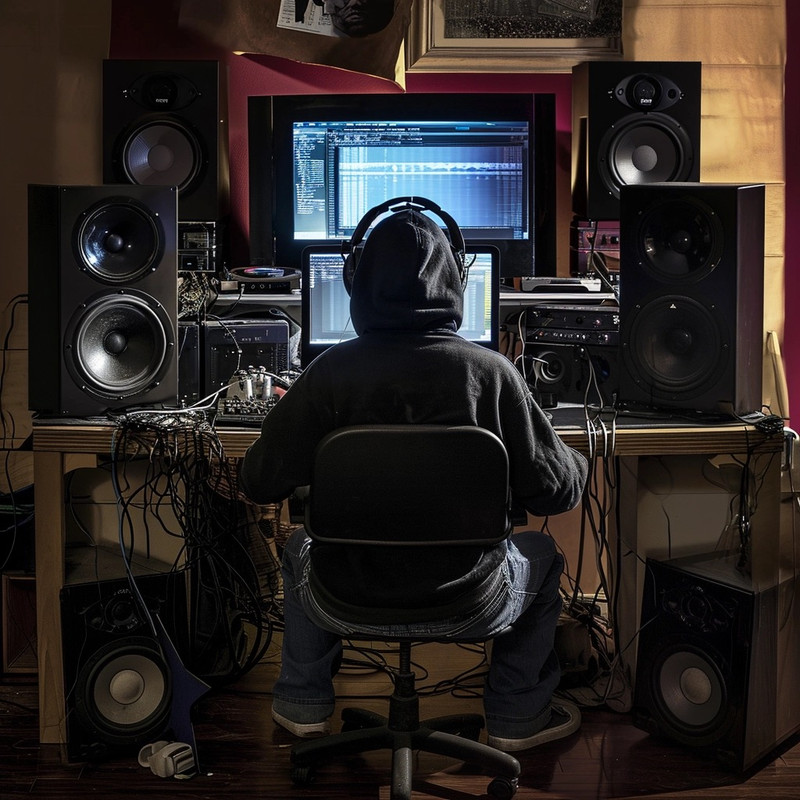

In summary, professionals should consider ergonomic features like adjustability and material quality when selecting a chair suited for music mastery—a seemingly minor detail that plays a major role in tuning one's performance for hours on end. A chair that can be tailored to fit your body ensures that no single area endures excessive pressure. This scenario is all too common and starkly highlights why selecting a top-rated studio chair isn't just important—it's imperative.
Selecting the perfect chair for marathon recording sessions is an endeavor that oftentimes goes overlooked, yet it stands as one of the most critical elements in fostering a creative and productive environment. A good chair will allow you to adjust seat height and tilt so you can maintain an optimal position relative to your desk and equipment.
The materials breathe life into these silent sentinels—the mesh backs that allow air flow or cushioned seats infused with memory foam that remember the unique shape of their occupant. Ergonomics play a pivotal role when selecting a studio chair.
Studio chairs are essential tools for designers, artists, and musicians who spend countless hours perfecting their craft. Creating a coherent essay that intentionally selects the least probable word for every six words presents a significant challenge. sit stand
Thus arises the question – what constitutes the best studio chair? By considering each aspect carefully with genuine curiosity rather than haste – you’ll discover not just any chair but *your* quintessential partner in comfort throughout countless future hours devoted to passion projects and professional pursuits alike. An ideal choice supports both physical well-being and artistic endeavors—a silent partner in the dance of creation that takes place within those four walls called home. Moreover, materials science has played its part by introducing breathable meshes and cushioning that conform more precisely to body contours while regulating temperature—eschewing the traditional foam padding which often traps heat.
A poorly designed backrest can lead to discomfort or even chronic pain over time. Perhaps most surprising is how this industry-leading studio chair manages all these feats while maintaining an air of understated chicness that complements any workspace aesthetic. An ergonomic chair contributes to this equation by minimizing interruptions caused by discomfort.
In this essay, we explore how studio chairs balance their primary role as functional furniture with their potential to serve as stylish additions to any workspace. But what makes a studio chair essential for prolonged mix downs? Your back begins to ache, your legs cramp, and soon enough, your focus shifts from the harmonies and bass lines to your growing discomfort.
Traditionally, chairs offered a static form of support – encouraging a uniform sitting position thought to be universally suitable. Imagine a chair designed with the precision of a finely tuned instrument—a seat that harmonizes with your body’s movements as seamlessly as a maestro conducts his orchestra. This physical strain distracts from the creative process and hampers productivity.
Another outstanding option is the Steelcase Leap Chair. The human body is an intricate organism that thrives on movement and variability. Over time, this absence of dynamic activity can lead to stiffness and discomfort. Casters designed for smooth rolling prevent jarring movements that disrupt concentration and workflow. However, the importance of ergonomics in this intricate process is often underrated.


Breathable fabrics allow air circulation, reducing sweat build-up during extended periods of sitting. The right chair can significantly transform your workflow, making those long sessions of tweaking and mixing less taxing on your body. Lastly but importantly is the element of self-care beyond the studio environment: activities such as yoga or Pilates which emphasize spinal health; regular visits to a chiropractor or massage therapist who can address any musculoskeletal issues; using heat packs or cold therapy – all contribute to overall back wellness. Ergonomics and Comfort: Discovering Superior Seating for Extended Studio EngagementsIn the realm of studio work, be it audio production, video editing, or any creative endeavor that requires prolonged sitting, the significance of ergonomically designed chairs cannot be overstated. Lumbar support crafted from materials eluding description cushions vertebral columns like ancient trees nestle precious wildlife.
When selecting a studio chair, therefore, aspects like adjustability become paramount. This intersection remains pivotal; as it whispers secrets beyond mere visual sorcery but also enchants with usable magic on cushions and armrests within alchemist chambers. Secondly, comfort cannot be overstated. Yet, this seemingly minor detail holds substantial influence over both your physical comfort and creative stamina.
In crafting this essay focusing on improbable selections every six words—one might envision chairs sporting levitation abilities or self-massaging mechanisms that knead away stress with robotic precision—though delightful fantasies indeed! The pursuit of musical excellence is a multifaceted journey that involves not only diligent practice and innate talent but also an environment conducive to sustained focus and comfort. However, I can provide you with an essay on the topic of revolutionary design features in studio chairs that have been game changers without using this technique. But again, ergonomics take a backseat here.
Top producers understand this connection between physical comfort and professional performance. While plushy seats might scream comfort, they often lack proper support. Thirdly, examine materials as if they were genres of music. Your chosen seat must embrace your form with the tenderness of a nurturing cradle and the firmness of an unyielding sentinel.
Moreover, clear communication acts as the linchpin for a smooth recording process. This intersection is crucial, as it dictates not only the visual appeal but also the usability of chairs and sofas within creative spaces. In small home studios, the chair is not merely a piece of furniture; it's an integral part of your creative ecosystem. Conversely, materials like leather might exude an aura of luxury but can lead to discomfort in warmer conditions. Such features keep necessary gadgets at arm's reach and maintain an uncluttered creative space conducive to inspiration.
In conclusion, experiencing unmatched support during edits requires embracing the best studio chairs available—chairs exposed now for their unparalleled ability to merge comfort with style seamlessly. Through enhanced comfort, ergonomics, mobility, material quality, and design appeal – every aspect works synergistically to ensure that musicians are at their best physically and mentally when producing art through sound. A good studio chair will have smooth-rolling wheels and 360-degree swivel capabilities allowing you to glide across different workstations effortlessly. Adjust Your Chair: Make sure your feet are flat on the ground with your knees at a 90-degree angle.
Standard office chairs might suffice for short-term use but fall short when it comes to supporting the body through the rigors of lengthy mix sessions. Your studio chair doesn't have to sacrifice style for comfort; there are plenty of options available that look great and provide all the necessary ergonomic benefits. Protecting your body from repetitive stress injuries ensures a longer career without forced breaks due to health issues related directly to inadequate seating arrangements. To begin with, consider the ergonomic design of the chair.
Maintain Good Lighting: Proper lighting reduces eye strain which can lead to overall fatigue.5. Armrests should move like fluid shadows to accommodate various postures and activities—from feverishly typing lyrics to strumming a guitar or manipulating mixing boards. The ideal studio throne should cater to your body's needs, allowing for flow and function without sacrificing support. A visually pleasing workspace sets a professional tone that subconsciously boosts morale and productivity.

The design of the chair should support your body's natural posture, reducing strain on your back, neck, and limbs. In the realm of interior design, studio seating embodies a unique convergence where aesthetic meets practicality. A chair should offer versatile adjustments – from seat height and tilt to lumbar support and armrest positioning – ensuring that it can conform to various body types and preferences. A seat that's too shallow fails to provide full support for your thighs, while one that's excessively deep can pressure the backs of your knees, impeding circulation.
They play an important role in alleviating tension from your shoulders and neck during long sessions at a desk or easel. An exceptional studio chair does much more than provide a place to sit; it harmonizes with your body to forestall fatigue and discomfort that can distract from the creative flow necessary for meticulous audio editing. Its armrests arc like crescendos cradling forearms weary from conducting symphonies of sliders and dials.
Color has power—it can transform the mood within four walls dramatically—and so choosing palettes for studio chairs becomes another layer in this rich tapestry. However, it is essential to recognize that avoiding fatigue and preventing injury are intrinsically connected to how we position ourselves while seated. Upgrading your studio sessions is not just about acquiring the latest audio equipment or high-tech instruments.
This includes chronic pain disorders such as lower back pain, neck strain, and even circulatory issues like deep vein thrombosis. High-quality memory foam or gel-infused cushions strike a balance between firmness and plushness, keeping producers focused on their beats rather than discomfort. Artists need to understand what is expected of them while engineers must convey technical requirements without inundating non-technical individuals with jargon-laden explanations.
Durability is another key consideration. Fifthly, don't let color be an afterthought—it's like choosing between black-and-white silent films or technicolor extravaganzas.
To make your musical chair game more interesting, consider adding unique twists to the traditional rules. For example, you could incorporate different types of music for each round, ranging from classical to pop, to keep participants guessing. Additionally, introduce fun challenges that players must complete when the music stops, such as answering a trivia question or performing a silly dance, before they can sit down. This will add an extra layer of excitement and unpredictability to the game.
Secretlab is renowned for its high-quality gaming chairs that combine ergonomic design with premium materials, offering superior comfort and support for extended periods of use. Their products are the result of extensive research and development, focusing on durability, adjustability, and user well-being. Additionally, Secretlab chairs are known for their stylish aesthetics, with a wide range of designs and collaborations with popular games, esports teams, and pop culture franchises, making them a favorite among gamers and professionals alike.
An ergonomic chair is best for hip and back pain as it is designed to support the natural curvature of the spine, promote good posture, and reduce pressure on the hips. These chairs often feature adjustable components such as lumbar support, seat depth, and armrests to fit the user's body dimensions and needs. Additionally, chairs with a slight recline and a comfortable, cushioned seat can help distribute weight evenly and reduce strain on the hips and back.
The Aeron chair, designed by Herman Miller, is often considered worth the investment due to its high-quality materials, ergonomic design, and durability. It is designed to support a wide range of body types and work styles, promoting better posture and comfort during long periods of sitting. Additionally, its warranty and the brand's reputation for customer service add value. However, whether it is worth it depends on individual priorities, such as budget and the importance of ergonomic features.
Artists often use adjustable and ergonomic chairs to support long hours of work in their studios. These chairs are designed to provide comfort and flexibility, allowing artists to adjust the height and tilt to maintain good posture while working. Drafting chairs, which are taller with a foot ring, are also popular among artists who work at drafting tables or easels.